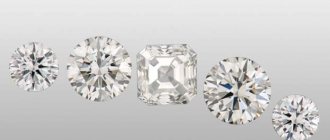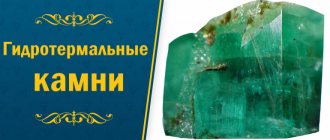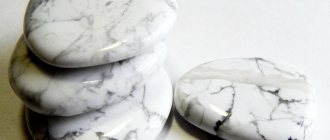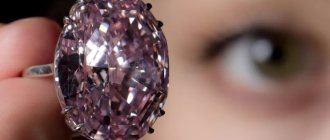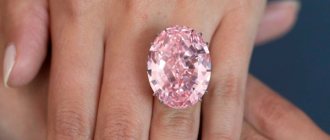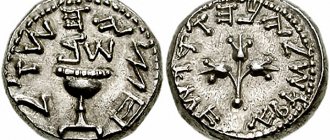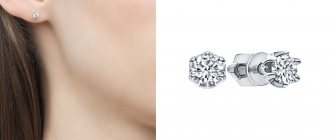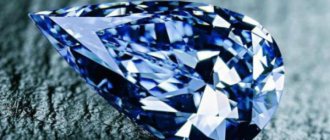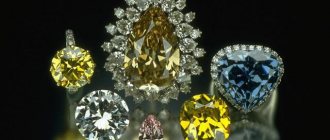This figure shows the measured and visually assessed proportions that affect a round diamond.
A specific set of terms are used to describe the parts of a diamond. Each part of a diamond contributes to its appearance.
A standard round diamond has 57 or 58 facets. The table facet (table facet) is usually the largest facet in a diamond. It helps collect light and either reflects it back to the observer's eye or directs it deeper into the diamond. The crown's facets, composed of 8 beveled facets, 8 stars and 16 top halves, collect and diffuse light, creating brightness, fire and a sparkling pattern of light and shadow. The pavilion's wedges, consisting of 16 lower halves, 8 main culets and an auxiliary culet, reflect light back through the crown into the viewer's eye. All of these facets work together to create a diamond's unique appearance.
Average girdle diameter
The diameter of a round diamond is the distance from the edge of the girdle edge to the opposite edge of the girdle edge, straight through the center.
Since even very well-cut round diamonds are never perfectly round, the diameter is measured in several places, noting the minimum (smallest) and maximum (largest) measurements. The average diameter of the girdle is calculated using the formula accurate to hundredths of a millimeter (0.01 mm):
Average girdle diameter = (minimum diameter + maximum diameter) ÷ 2
This value is used in calculating certain proportions such as landing size, overall depth, crown height and pavilion depth.
Fake of the 21st century: synthetic and ennobled diamonds with certificates and laser engraving
It is known that it is a common practice in the diamond market when an inscription, usually the certificate number, is laser-applied to the girdle of a diamond . Market participants are accustomed to considering this inscription as an additional method of authentication : if the number on the girdle matches the certificate number, then we can assume that the certificate corresponds to this diamond. Electronic copies of certificates are stored on laboratory websites, and if you know the number, you can find such a copy, which is convenient if the original certificate is not available. Finally, for a diamond set in jewelry, such an inscription allows you to identify the stone and, again, use an electronic copy of the certificate.
In recent years, gemological laboratories have been receiving more and more synthetic diamonds *, as well as natural diamonds refined using the HPHT method . The liquidity of such stones on the market is low, because... consumers prefer natural, unrefined diamonds over them. Since 2015, the laboratory of the Gemological Center of Moscow State University periodically receives diamonds with a laser inscription differs in font or depth . Studies of such stones have shown that all of these diamonds are low-nitrogen , some of them turned out to be refined using the HPHT method , and some were synthetic . In each case, some of the cutting parameters of the stones did not coincide with the parameters specified in the original expert reports, from which we can conclude that the stones were “selected” with maximum precision to match those natural ones, and then the numbers of the original certificates were applied to them.
Note: Here and further, as well as in the title of the article, the term “synthetic diamonds” refers to diamonds made from synthetic diamonds.
Rice. 1. An example of an original laser inscription. Photo: GC MSU
At risk are stones that have high characteristics in color and purity . Thus, in the case of a diamond weighing 3.02 ct , with D / IF , having an inscription on the girdle with the GIA certificate number (Fig. 2), it was established that this stone is a low-nitrogen type IIa diamond that has undergone HPHT refining .
In this case, the inscription on the girdle is not genuine . This can be seen from the inscription itself, but is also confirmed by the fact that some of the geometric dimensions of the stone do not coincide with those described in the GIA report.
An analysis of electronic databases of diamond certificates allows us to conclude that a simple matching of stone to paper becomes more likely, the smaller the stone. Thus, for a 3.02 ct D / IF from our example, you can select 10 times fewer certificates than for a stone weighing 1 carat, and 20 times less than for stones weighing 0.5 carats with the same characteristics.
Rice. 2. Fake laser inscription on a 3.02 ct diamond. Photo: GC MSU
Another example from the practice of the Laboratory of the GemCenter of Moscow State University is a diamond weighing 1.12 ct with a laser inscription and the number of a famous gemological laboratory (Fig. 3). Through the use of standard screening and testing processes, the stone was identified as a synthetic HPHT diamond . And therefore, it was concluded that the inscription of the number and brand name on the girdle is fake .
The characteristics of this synthetic cut diamond are defined as D/IF . With a similar number, there is a very similar stone in the GIA database with characteristics D/VVS1 . Upon careful analysis of the inscription on the girdle, differences from the original GIA designation can be noted, but the difference may not be noticed by the average consumer. When comparing the cutting parameters, experts from the Laboratory of the Moscow State University Center discovered significant differences in the size of the platform , the angle of inclination of the main faces of the crown , and the depth of the pavilion . It is worth noting that in terms of diameter and overall height, both stones have almost the same parameters .
Rice. 3. Fake laser inscription on a 1.12 carat synthetic diamond. Photo: GC MSU
1.66 ct with a laser inscription , which can be seen in Fig. 1, was brought for examination to the Gemological Center of Moscow State University 4. According to the expert opinion found on the GIA laboratory website (Fig. 5), the stone should be natural, but studies have shown that it is synthetic.
Rice. 4. Fake laser inscription on a 1.66 carat synthetic diamond. Photo: GC MSU
Rice. 5. GIA report on a 1.66 carat diamond.
Measuring the geometric parameters of this stone made it possible to establish that a number of parameters differ from those in the GIA certificate :
- Dimensions – 7.58 - 7.65 x 4.75 mm (Gemological Center of Moscow State University) and 7.55 - 7.61 x 4.74 mm (GIA);
- Site size – 55.2% (Gemological Center of Moscow State University) and 57% (GIA);
- The top angle is 35.2° (Gemological Center of Moscow State University) and 34° (GIA).
- Fluorescence also differs - none (Gemological Center of Moscow State University) and faint (GIA).
For comparison, we present an expert opinion on this stone, issued by the Gemological Center of Moscow State University (Fig. 6).
Rice. 6. Left: conclusion of the Gemological Center of Moscow State University on a synthetic diamond weighing 1.66 carats and a fake laser inscription. Right: GIA report for a natural diamond with similar characteristics, the number of which was used in the forgery. Below: enlarged fragments of these documents.
Studying this issue on the Internet showed that the problem of counterfeiting laser inscriptions is not new . Some sources described this situation back in 2007 , such as the Canadian website.
It has been repeatedly found that stones treated with the HPHT method not only had a fake laser inscription, but were also accompanied by fake reports . about one such case that occurred in Europe in 2013 .
Another difficulty lies in the fact that laboratories in different countries and at different times can change the spelling and fonts of laser inscriptions, as well as the devices themselves for applying inscriptions to the girdle. Therefore, the appearance of the inscription itself can only serve as an indirect sign of the stone's inconsistency . It is possible to unambiguously establish the compliance of a stone with an expert opinion by carefully studying all the parameters of the stone , as well as examining it with additional instrumental methods .
The task of identifying synthetic and refined diamonds has been solved by the Gemological Center of Moscow State University throughout its existence. We can see how technologies for the synthesis and refining of diamonds have changed in recent years, but with the accumulation of knowledge and the improvement of diagnostic techniques, the identification of synthetics and refined stones is as successful as before.
What conclusions can be drawn from reviewing and studying these cases?
- Laser inscription does not provide absolute protection for the consumer. It can be counterfeited and as a result will be present on a synthetic or treated diamond.
- Fake inscriptions may have a different font, size, depth or appearance, and a specialist will always pay attention to the differences.
- Based on the analysis of such stones in the laboratory of the GemCenter of Moscow State University, it can be assumed that stones of round cut, high color and clarity groups, without strong fluorescence, are more often counterfeited.
- The certificate does not provide absolute protection for the consumer. The certificate can be matched to the stone or the stone can be cut to match the certificate. If there is a laser inscription on the stone and there is a certificate, it is recommended that such a stone be checked.
- A certain gemological qualification allows you to check the geometric dimensions, location of characteristics on the diagram, cutting parameters, luminescence of the stone and, in some cases, conclude that the stone does not comply with the certificate. But even the stone’s full compliance with the certificate does not guarantee that the stone is natural and unrefined.
- The risks of buying the “wrong” diamond today are higher than the cost of diagnostics in a qualified gemological laboratory.
Material prepared by: Gemological Center of Moscow State University
Sign up for an examination
How to get to the Laboratory
January 17, 2022
All news
Total depth in percentage
The overall percentage depth of a round brilliant is the ratio of the distance from the table to the culet to the average diameter of the girdle, expressed as a percentage to the nearest tenth of a percent (0.1%).
The total percentage depth is a calculated value obtained using the following formula:
Total depth % = (depth ÷ average girdle diameter) x 100
What types of culets are there?
The culet is described according to its size. The Gemological Institute of America (GIA) uses the following abbreviations:
- None
- Very Small
- Small
- Medium
- Slightly Large
- Large
- Very Large
- Extremely Large
If you are reading a diamond grading report, you will see a section that lists details about the culet.
Site percentage
The table percentage of a round brilliant is the average of four measurements (from the edge of the crown facet to the opposite edge through the center), expressed as a percentage of the average girdle diameter. Recorded to the nearest whole percent (1%).
The site percentage is a calculated value obtained using the following formula:
Pad% = (average pad size ÷ average girdle diameter) x 100
Table size can have a significant impact on the appearance of a diamond, especially when associated with certain combinations of crown and pavilion angles.
DEFECTS IN DIAMONDS
Diamond crystallized in the depths of the earth gradually, over several time phases. At the same time, the conditions of formation - pressure, temperature and cooling - were not always the same. This is how inhomogeneities arose, which we now identify in polished diamonds as internal defects or so-called inclusions. They occur in the form of clouds or nebulae, in the form of fault cracks, cleavage cracks and stress cracks, or as inclusions of minerals that were directly involved in the growth of diamond crystals. All these individual types of inclusions today serve as identification features for diagnostic purposes and are an indicator of the natural origin of the stone. The nature of the inclusions remained unexplored for a long time; all dark inclusions were called “coal”, light ones - “ice” or “snow”. Only with increasing interest in the question of the diversity of inclusions it turned out that the cause of the false impression of a dark color is an optical illusion: due to the lower refractive index of mineral inclusions, the overall change in light occurs at the diamond-inclusion boundary so that in some viewing directions the inclusion will appear black . The same phenomenon can be observed in the presence of cracks. Interesting research works by Dr. E. GÜBELIN, EPPLER and other authors explained that inclusions in diamonds arose in three growth phases. A distinction is made between inclusions that already existed before crystallization (pregenetic inclusions) and were involved in the formation of diamond: the second group of inclusions formed simultaneously with the diamond (syngenetic inclusions) and the third group, which formed later (epigenetic inclusions). This latter type included, for example, cracks that formed as a result of stress under the influence of temperature and pressure fluctuations or as a result of uneven cooling. The most common mineral inclusions are: red garnet, brown chrome spinel, yellowish diamond, colorless zircon, green enstatite and diopside, as well as olivine, ilmenite and dark brown to black magnetite, etc. Inclusions (internal defects ) (
indicated in red
)
The predominant types of internal defects in diamonds are:
Cleavage cracks
, running in the direction of the cleavage planes parallel to the four faces of the octahedron. They always go straight
Fracture cracks
- these are cracks running in all other directions (not along cleavage planes), which in most cases run randomly
Tension cracks
arise as a result of different coefficients of thermal expansion of foreign mineral inclusions. In this case, they move away from the crystalline inclusion, usually in the form of rays
Feathers
are fault cracks, cleavage cracks, or stress cracks that, when viewed perpendicular to the crack plane, appear white and resemble a “feather” shape.
Crystal inclusions
) are minerals that are either colorless in nature or colored red, brown, yellow, green or black.
Structure phenomena
- these are “clouds” or “nebulas”; they are usually clusters of microscopic small crystals in the form of dust particles. If there are few of them, they do not have a significant effect on the brilliance of cut diamonds. Only if they are distributed throughout the stone, their accumulation (cloudiness) affects the purity. Structural defects can also include structures of internal deformation, in the form of parallel stripes and seams.
Twinning planes
or twin seams are usually found as slightly curved lines that cross the facets of the bottom of the diamond. However, in fact we are talking about smooth planes, namely the octahedral planes of twin crystals that run straight through the entire stone. Since the edges of the lower part form a cone, the planes, when viewed through the platform, give the impression of curved lines. Typically, twin planes are colorless and are therefore recognized only in certain positions. In rare cases, they have a slightly yellowish or brown tint. In twinning planes, in most cases, the presence of so-called “whiskers” (strips, seams, both straight and differently oriented) is observed.
External Features (
are indicated in green
)
Along with proportions and symmetry relationships, the cut assessment takes into account the external defects of the stone, with a tenfold increase being decisive, i.e. those and only those defects that are visible at tenfold magnification are assessed. External defects include:
- the quality of grinding and polishing of the girdle, the presence of a “fringe” (“beard”);
- the presence of natural facets of the original diamond crystal;
- the presence of additional edges;
- traces of polishing;
- chips, nicks, cavities;
- fracture sites;
- figures from impact;
- traces of scorching on the edges;
- “knots” on the edges;
- laser "needles"
- growth lines and twin seams extending to the surface
While the height and regularity of the girdle is considered among proportions and symmetry, the quality of its polish is considered among external defects. Each girdle may have a different surface finish. It can be beveled, polished, honed or rough, rough or grained. The girdle is usually ground and has a shiny or matte light surface. If, however, the girdle is processed quickly and under too much pressure, then cracks may appear along the cleavage. In such cases, they talk about the “beard” or “fringe” of the girdle. Other surface defects of the girdle include, for example, numerous small pores and pits. Since the “beard” of the girdle has a particularly negative effect on the brilliance, this factor should be especially taken into account when assessing the cut. Other external defects, such as nicks, chips, burns and others, are also found on the girdle.
Natural crystal facets (Naturals) - knives
This refers to the small uncut facets of the original diamond crystal that are found under the girdle in the cut stone and which the cutter leaves behind to save weight. They are called knifes. The brilliant cut originated, in general, from an octahedron-shaped diamond crystal. The girdle plane is located in the plane of the quadratic surface of the octahedron. When turning a diamond, the cutter tries to maintain a possibly larger girdle circumference and approaches the outermost edges of the original rough stone. Therefore, sometimes small parts of the edges of the octahedron are left untreated so that one diamond can have 1-4 natural crystal facets. These natural facets, usually very small, are found underneath the girdle and are not recognizable when viewed through the top of the diamond. They do not have much influence on the brilliance of the stone and are almost not taken into account when assessing the cut. If they flatten the roundness of the girdle and extend to more than 1/4 of the edges of the lower part, they can be recognized when viewed from above. Then they are evaluated in the same way as the natural edges located under the girdle. The surface of the natural facets of a crystal always represents the structure of the original surface into which the diamond is pulled into like a “shirt.” Very typical defects of this surface structure are small figures in the shape of triangular depressions - the so-called "trigons" - parallel lines or, less commonly, small squares or rectangles. For a diamond, trigons are such a characteristic feature that they serve as unambiguous evidence of the natural origin of the diamond.
Extra faces
Typically these are former natural facets of the crystal, but they have been faceted and therefore the surface structure is no longer recognizable. Additional edges in most cases are found under the girdle and very rarely in other places. Additional edges do not impair gloss and serve primarily as identification.
Nicks and fractures
Notches and chips are small or larger wedge-shaped notches on the edges and girdle. They mainly occur under pressure or mechanical load and are therefore often accompanied by stress cracks. Fracture sites are generally found near the girdle. Since diamond easily splits along the planes of the octahedron, it does not remain insensitive to sudden mechanical load (pressure), as one might assume based on its high hardness. The jeweler should especially keep this in mind when installing or removing a stone from a setting and ensure the correct use of his tool. Consequently, during wearing, for example, when hitting hard objects (door handles), fracture points may appear. In a diamond they have a ladder or stepped shape and are thus a typical characteristic of a diamond.
Figures from impact and damage to ribs (Indentation marks, edge damage)
They are also the result of shock and pressure. On the edges of the edges and on the culet they appear in the form of small dots, spots and form small scratches. While scratches are only on the surface, they are considered as external defects. However, if they penetrate inside the stone, then they should be regarded as internal defects.
Polishing marks
Almost every cut diamond shows signs of polishing. However, in most cases they are so subtle that they are difficult to recognize and do not impair the shine. Polishing marks are most easily observed when viewed from the opposite side of the diamond. Since the hardness of a diamond depends on the direction, and some surfaces are particularly hard, they are difficult to cut. Since the cutter can cut only one face at a time on a cutting disk, the polishing marks change their direction from one face to another.
Twinning lines and plates
Diamonds have the property of merging into twin crystals; Such fusion always occurs in the crystallographic direction with a mirror image, so that in a twin diamond the hard directions pass exactly opposite each other. Therefore, during cutting and polishing, visible thin seams appear on the surface, the so-called twinning lines or twinning plates, which are traces of the planes of fusion of two twinned crystals. Since these planes are generally colorless, they are not visible as a plane, but only as a seam. In rare cases, they have a yellowish or brownish tint and deteriorate the quality of the stone's cut due to the resulting loss of shine. There are single or repeatedly repeated twin seams - in this case they speak of twin plates. Unlike polishing marks that appear during processing, twin seams are natural defects. They always pass through many edges, thanks to which they can be distinguished from polishing marks. If twin stitches affect the shine, then later, when assessing the cut, they are not taken into account
Growth lines
They represent the boundaries of inhomogeneities that arise under various conditions during the growth of the original diamond crystal.
They have the appearance of extremely fine jagged lines, which are rare and only difficult to recognize due to their thinness. “Knots”
This is the name given to the smallest knotty irregularities on the polished surface of diamonds.
In most cases, they arise from an inclusion that reaches the surface, which is difficult to cut. Knots are usually accompanied by small polishing marks. Burn marks Burn
marks appear when the surface of the stone gets too hot during polishing due to friction. They look like light, milky specks and are accompanied by interference colors. They significantly reduce shine. They can, however, be easily removed with additional polishing with minimal loss of weight.
Laser noodles
A sign that a diamond has been refined using laser drilling is the presence of a drilled thin channel. Laser-drilled holes appear as white needle-like channels with a more or less constant diameter. Typically these holes are relatively straight with a very small diameter (a few microns), but there are also holes with bends and kinks. This is done so that they intersect several closely located inclusions at once. At the point where the diamond (brilliant) facet reaches the surface, the narrow channel can expand. Sometimes laser-drilled channels are filled with a special compound used to fill cracks.
Crown angle
The crown angle is the measured angle between the plane of the main facet of the crown and the plane of the landing. Recorded as the average of eight crown angle measurements to the nearest one-half degree (0.5°).
The angle of the crown can significantly affect the appearance of the diamond. Typically, crown angles between 32 and 36 degrees create attractive, vibrant, and fiery diamonds when paired with the correct table percentage and pavilion angle.
Crown height in percentage
Crown percentage height is the distance measured from the landing to the point of intersection of the main facet of the crown with the girdle chamfer in relation to the average diameter of the girdle, expressed as a percentage. Recorded to the nearest half percent (0.5%).
The percentage crown height is a calculated value obtained using the following formula:
Crown height% = (average crown height ÷ average girdle diameter) x 100
Pavilion corner
The pavilion angle is the measured angle between the main facet of the pavilion and the plane of the site. The average of eight pavilion angle measurements is recorded to the nearest 0.2 degrees.
Subtle differences in pavilion angle can have a significant impact on the appearance of the diamond. For example, steep pavilion angles can create dark areas under the diamond table.
Pavilion depth in percentage
Percent Pavilion Depth is the depth of the diamond's pavilion, measured from the culet to the intersection of the pavilion and girdle, in relation to the average girdle diameter, expressed as a percentage. Recorded to the nearest half percent (0.5%).
The average pavilion depth percentage is a calculated value obtained from the following formula:
Pavilion depth% = (average pavilion depth ÷ average girdle diameter) x 100
Length of the lower wedge in percent
The percentage of the lower wedge is the ratio of the length of the lower wedge to the distance from the girdle to the culet, expressed as a percentage. Recorded as the average of eight measurements to the nearest five percent (5%).
Wedges that are too short or too long can negatively affect the appearance of the diamond, especially its pattern.
Percent girdle thickness is the average thickness of a diamond's girdle, measured at eight positions at its widest points (the "hills") and expressed as a percentage of the average girdle diameter. Positions “hills; - These are the “thick places” located where the main edges meet. Recorded to the nearest half percent (0.5%).
Characteristics.
The diamonds were shaped to follow the contour of the diamond material and minimize waste.
Such stones were typically cut to maximize carat weight rather than brilliance.
Here are the most distinctive characteristics of such diamonds:
Shape: The outline of these stones is round (when viewed from above), just like the shape of the modern round cut.
Number of Facets: Ancient European cut diamonds have 58 facets, the same number as modern round cut diamonds.
Cult: Instead of a pointed end at the bottom, antique diamonds have an open culet.
This means that their lower ends have a flat edge instead of a point. (This bottom edge is called the “culet.”)
Cutting and cutting: A distinctive characteristic of antique European cut diamonds is that they are cut by hand.
As a result, a closer look at such a stone will reveal that its edges are not formed with the same precision as modern ones, which are formed using more complex tools.
Symmetry: In general, these diamonds are not very symmetrical. For example, their edges may be irregularly shaped and not aligned well with each other.
The reason for this, as already noted, is that the cutting technology used was not as well developed as it is today.
Description of girdle thickness
The thickness of the girdle is visually assessed as the range between the thinnest (minimum) and thickest (maximum) areas (between “valleys” and hills”).
Descriptions of girdle thickness include very thin, very thin, thin, medium, slightly thick, thick, very thick, and extremely thick areas.
Thinner girdles can affect a diamond's longevity, while thicker girdles can hide excess weight. The cut quality rating may be reduced in both cases.
Effect of defects on diamond clarity
The clarity of a diamond determines the extent to which internal/external defects of the stone will appear. It is the purity of a diamond that determines its strength and, of course, its final cost.
Internal defects (inclusions) are a key quality of stone purity. Everything matters: size, quantity, location, degree of visibility. Together, all these variables affect the brilliance and value of the stone.
International Diamond Clarity Scale
The greatest damage to the stone is caused by those defects that are located closest to the surface of the diamond. After all, the greater the likelihood that inclusion can weaken the structure of the stone and lead to its splitting.
Advice from YK: Avoid stones where the description mentions “cavity”: both teeth and diamonds don’t need holes!
Painting
The term "painting" refers to the inclination of the upper or lower half-facets in relation to the main upper and lower facets, resulting in more subtle "hilly" positions where the main facets of the crown and pavilion meet. If this angle of inclination decreases, approaching the angle between the main faces, then the visual difference between them is blurred.
The top illustration shows the picture on the crown, the bottom one shows the picture on the pavilion.
Antique European Versus Old Mine Cut: What Are the Differences?
If the European cut is the predecessor of the modern cut, the old mine cut can be considered the ancestor of the old European cut.
One of the most noticeable differences between the two is that the old mine has a more rectangular shape with rounded corners.
Another difference is that the shaft cut has a large culet that is easily visible through the top of the stone.
Finally, the table in a shaft cut is slightly larger due to the less precise cutting technology used, and the edges of the stone are usually more irregular in shape.
Overall, it's fair to say that the old mine cut looks less refined in comparison, but many find it has a distinctive charm.
Deepening
Depression is the opposite of painting. The upper and lower half-facets or lower half, or both, deviate from the face or pavilion edges and in relation to each other, resulting in thinner "hill" positions where the edges of the upper and lower halves meet. The angle of the top or bottom half increases, and the connection between the half-faces becomes visually unclear.
The top illustration shows a recessed crown. The bottom illustration shows a recessed pavilion.
Painting and Embedding can occur on the diamond's crown, pavilion, or both. Both painting and setting are used to maintain weight and can affect the brightness and design of a diamond and are therefore taken into account when grading a diamond's cut.
Types of cuts and number of facets
Let us briefly describe the most common modern cut forms used by jewelers today.
- Round form. The most popular form of diamond cutting. Depending on the size of the original diamond, it can have 17, 57 or 85 facets.
- Oval shape. Traditionally, it has 57 sides.
- Marquise cut. Fantasy shape: elongated oval with pointed edges. Has 55 edges.
- Princess cut. Rectangular shape, the most popular among straight cut diamonds. Contains 65 edges.
- Asscher cut. Rectangular shape, a combination of radiant and emerald (step) cut. The number of facets depends on the size: 49, 57 or 75 faces.
- Emerald cut. Straight cut with steps. Has 65 edges.
- Pear cut. Has the shape of a drop. The number of facets is 65.
- Trilliant cut. A triangular diamond that most often has 52 facets. However, their number may be different - from 31 or more.
- Radiant cut. Rectangular or square wedge cut. Contains from 65 to 89 facets.
- Cushion cut. A square or rectangular diamond with rounded edges. As a rule, it has 64 sides.
- Heart cut. Fantasy form. Has 56-58 sides.
You can purchase diamonds of all cutting shapes, different weights and colors in our showroom. We work directly with manufacturers of precious stones, thanks to which we maintain optimal prices, “without mark-ups.” The quality of diamonds is confirmed by a certificate from the independent gemological center of Moscow State University. Come and choose your diamond!
